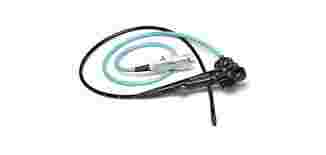The endoscopy devices market continues to show strong potential globally, but its growth trajectory is not without obstacles. Several critical challenges are hindering market expansion, especially in regions where demand is high but systemic limitations persist.
One of the most pressing growth challenges is budget constraint across healthcare systems. In both public and private sectors, many institutions struggle to allocate sufficient funds for high-end diagnostic equipment. While large urban hospitals may be able to invest in advanced endoscopy suites, smaller clinics and rural facilities often cannot. This uneven purchasing capacity leads to unequal access to early diagnosis and quality care.
Another major issue is the lack of infrastructure in developing and underserved regions. High-quality endoscopy requires clean water for reprocessing, stable electricity, climate-controlled environments, and trained personnel. Many healthcare centers, especially in low-income countries, lack even these basic requirements, preventing them from adopting the latest endoscopic technology.
Regulatory inconsistencies present another barrier. The approval and adoption of medical devices vary dramatically from one country to another. While some regions offer streamlined pathways for device approvals and clinical trials, others present bureaucratic hurdles, leading to delays in market entry. Manufacturers must tailor strategies for each jurisdiction, adding cost and complexity to their go-to-market plans.
The endoscopy devices market also suffers from limited local manufacturing capacity in many countries. Most devices are produced in North America, Europe, or East Asia, and shipping them worldwide adds logistical challenges and tariffs. Political instability, import restrictions, and supply chain disruptions further complicate availability in key regions.
Technological literacy and training gaps also hinder growth. Even when equipment is available, the lack of skilled endoscopists, technicians, and biomedical engineers can prevent full utilization. Institutions often rely on on-site training from vendors, which may not be scalable or sustainable. Without local education programs and certification pathways, growth remains restricted.
Moreover, cost transparency and procurement inefficiencies are significant issues. In some markets, government-run tenders can be slow or opaque, leading to delayed decision-making. Private healthcare institutions may face inconsistent pricing structures or lack clarity around long-term service agreements and upgrade options.
The pace of technological innovation itself can sometimes work against market growth. With new models and features released frequently, institutions may hesitate to invest in systems that could become outdated within a few years. This “wait-and-see” approach slows adoption and impacts sales pipelines for manufacturers.
Reimbursement policy limitations further complicate market expansion. In many countries, endoscopic procedures are not reimbursed at full cost, discouraging hospitals and clinics from performing them at scale. Without strong insurance support or government backing, return on investment becomes harder to achieve.
Lastly, environmental concerns are emerging as a growth-related challenge. The rising use of disposable devices and accessories is creating waste management issues, particularly in areas lacking proper disposal infrastructure. This could lead to regulatory restrictions and public pressure that affect future procurement decisions.
To overcome these challenges, a coordinated approach is required. Governments can incentivize investment in diagnostic infrastructure. Manufacturers can offer tiered pricing and localized support. And healthcare institutions must prioritize capacity building. Only through collaboration can these growth hurdles be addressed effectively.




